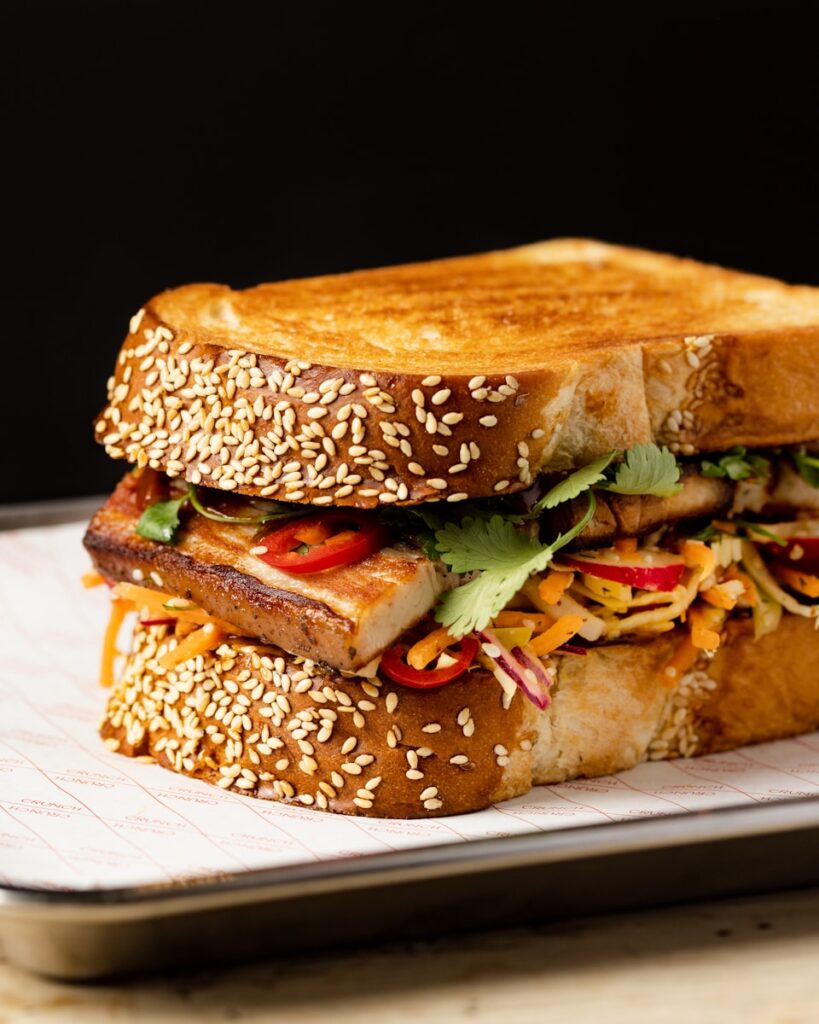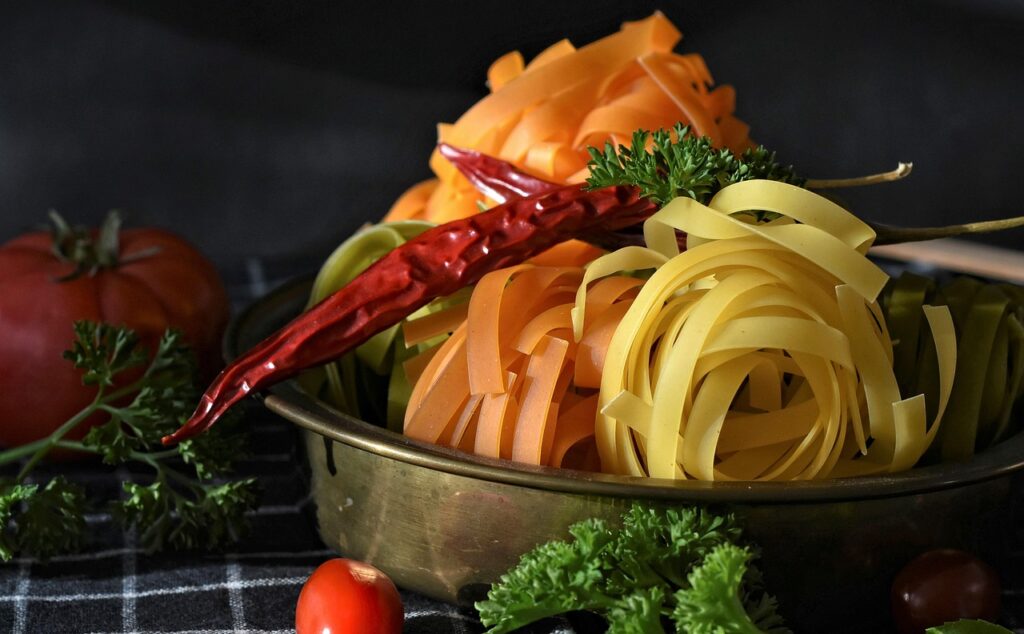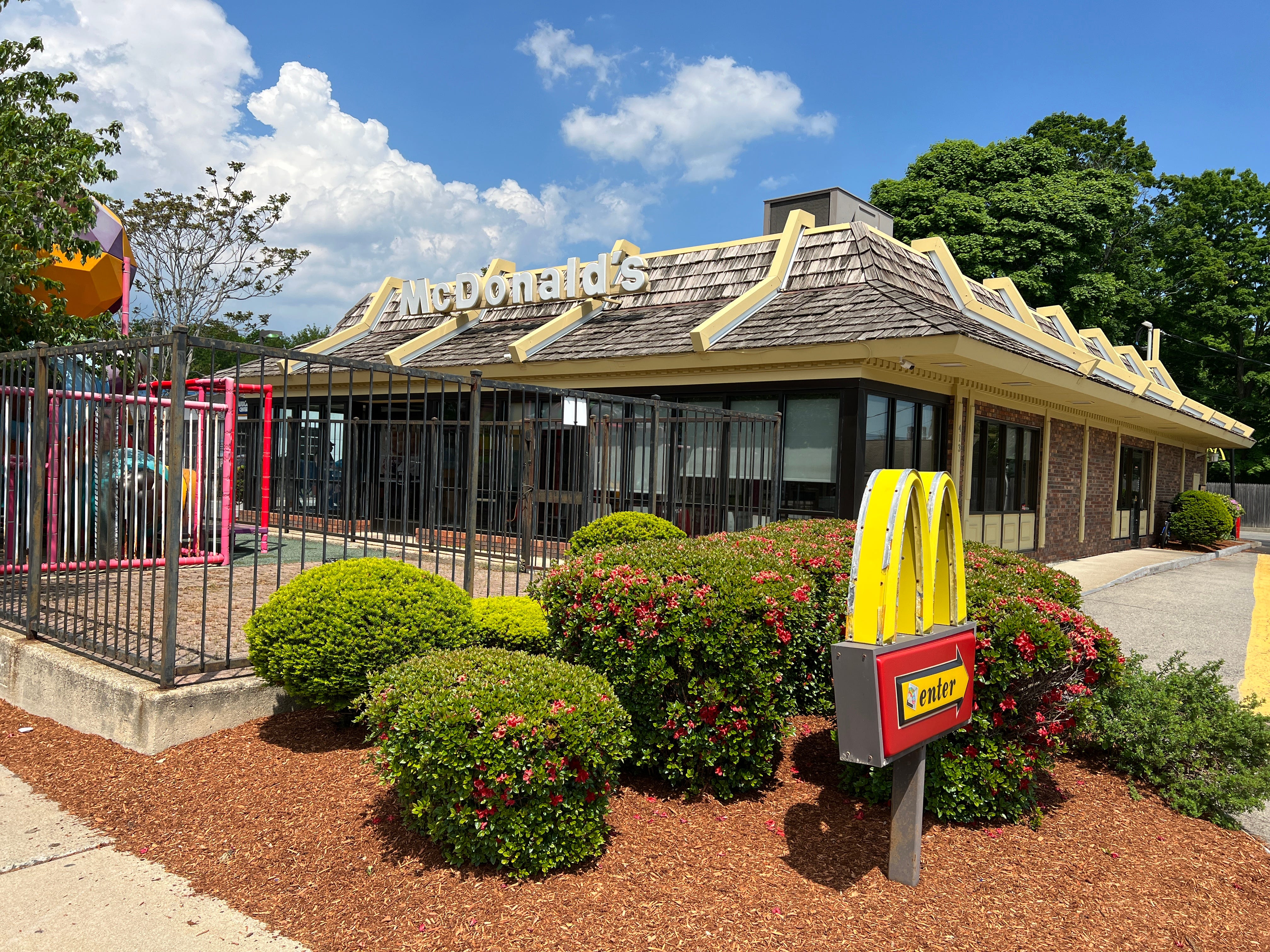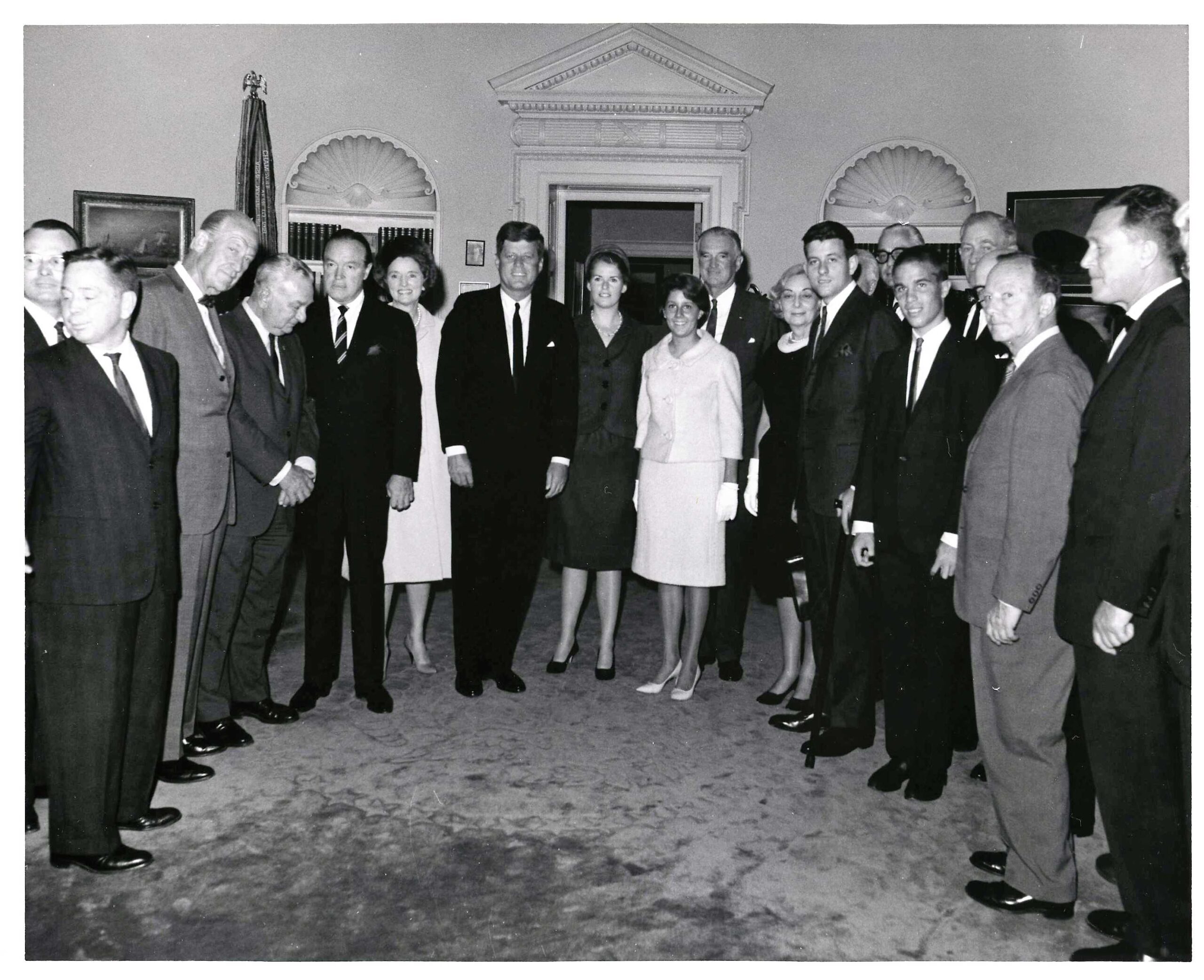
There’s something truly captivating about peering into the personal lives of historical figures, especially when it involves something as universally beloved as breakfast. Imagine starting your day with a dish that once graced the table of one of America’s most iconic presidents, John F. Kennedy. It’s not just a meal; it’s a moment, a connection to a bygone era of political glamour and family tradition that makes our taste buds tingle with curiosity.
Thanks to the meticulous records of the John F. Kennedy Presidential Library and Museum, we know the Kennedys were constantly inundated with requests for their favorite recipes. And among the myriad culinary delights that might have been, one recipe, in particular, stood out, repeatedly appearing in multiple publications and cementing its status as a White House legend. It’s the kind of storied dish that makes you want to roll up your sleeves and get cooking.
So, prepare to embark on a delicious journey! We’re not just sharing a recipe; we’re inviting you to experience a piece of American history, right in your own kitchen. These fluffy, buttery buttermilk waffles, said to be a particular favorite of JFK’s and often prepared by the elegant former first lady Jackie Kennedy, promise to infuse a little touch of Camelot into your morning routine. Get ready to discover the magic behind this iconic breakfast that could very well become your new favorite, too!

1. JFK’s Alleged Favorite Waffles: A Culinary Legacy
The allure of a presidential favorite is undeniable, and for John F. Kennedy, that honor reportedly belonged to a simple yet exquisite waffle recipe. These legendary eggy waffles, frequently made by former first lady Jackie Kennedy, were said to be a favorite of JFK’s, embedding them into the fabric of the Kennedy family’s daily life and, subsequently, into American culinary lore. The idea of the President of the United States savoring a specific breakfast item adds a delightful layer of intimacy to our understanding of the man behind the office.
Throughout November, IrishCentral commemorated Kennedy month, honoring the famed Irish American political dynasty and their legacy. In the countdown to the anniversary of JFK’s assassination on November 22, 1963, this particular recipe became a focal point, reminding us of the personal touches that defined their lives. It’s a testament to the enduring fascination with the Kennedy family that even their breakfast preferences continue to be a topic of interest decades later, bridging history with everyday pleasures.
This light and fluffy waffle recipe is indeed said to be John F. Kennedy’s favorite. While JFK was by no means a “foodie” and it’s said he had to be reminded frequently to eat, the fact that this recipe was shared numerous times by JFK himself or by his wife, Jackie, speaks volumes. Its frequent circulation implies a genuine attachment and enjoyment within the family, making it far more than just a casual dish but a cherished part of their domestic life.

2. The First Lady’s Touch: Jackie Kennedy’s Role
The narrative surrounding JFK’s favorite waffles often includes the romantic notion of Jackie Kennedy herself whipping up batches for her husband and children. It was said the First Lady made the waffles often for her husband and children, painting a charming picture of domesticity in the White House. This image undoubtedly contributed to the recipe’s widespread appeal and public fascination, as it connected the revered First Lady directly to a beloved family meal.
However, the reality of a First Lady’s life, especially one as prominent as Jackie Kennedy, often diverged from such traditional homemaker roles. Though the recipe comes from the Kennedy family, the origin and actual cook behind the waffles remains unclear. Was Jackie in the kitchen actually whipping egg whites and folding them into the buttermilk batter? The context suggests this was “unlikely” given her background and lifestyle.
Jackie Kennedy was a wealthy debutante who married into one of America’s wealthiest families and became a leading society figure and political spouse before becoming first lady at age 31. Moreover, the First Lady also held to an extremely strict diet, sometimes subsisting on little more each day than a baked potato, fruit, and cigarettes. So, the likelihood of Jackie and John Kennedy cooking these waffles themselves was slim. Nevertheless, enough evidence shows that they were, in fact, an actual family recipe, regardless of who personally prepared them.

3. Unearthing the Authentic Recipe: From the National Archives
The enduring popularity of the Kennedy family waffle recipe is evident in its widespread publication over the years. This one recipe, in particular, showed up in multiple publications, confirming its status as a sought-after culinary item from the First Family. Its journey from a private family favorite to a public sensation is a fascinating aspect of its history, demonstrating how deeply the public connected with the Kennedys on a personal level.
Different versions of this recipe have appeared in several cookbooks, reflecting its pervasive influence across various media. These include “Political Pot Luck: A Collection of Recipes from Men Only, Kings In The Kitchen: Favorite Recipes of Famous Men,” “The Celebrity Cookbook” (compiled for charity by Dinah Shore), “Many Happy Returns,” and “The Democrats’ Cook Book Or How to Cook a G.O.P. Goose.” This diverse array of publications highlights the recipe’s broad appeal and its place in American cultural history.
Beyond cookbooks, the recipe also appeared in a collection of recipes solicited by a class of sixth graders at the Post Avenue School in Westbury, NY, and the food columns of The Catholic Standard and Claypool Features Syndicate, reports ExtraCrispy.com. This extensive documentation, from official archives to school projects and newspaper columns, underscores the genuine public interest and affection for the Kennedy family’s culinary traditions. Here is the recipe from the National Archives Catalog:
**President Kennedy’s Favorite Waffle Recipe**
* ½ cup butter
* 1 tbsp. sugar
* 2 egg yolks
* 7/8 cup milk, or 1 cup buttermilk
* 1 cup plus 1 tbsp. of sifted cake flour
* 1 pinch salt
* 2 stiff beaten egg whites
* 4 tsp. baking powder
4. A Symphony of Ingredients: What Makes These Waffles Special
At the heart of any truly great recipe are its ingredients, and the Kennedy waffle recipe is no exception. This particular formulation features a full stick of butter, promising a richness and flavor that immediately sets it apart. The generous amount of butter is key to achieving that wonderfully tender quality that makes these waffles so melt-in-your-mouth delicious, creating a luxurious base for what promises to be an exceptional breakfast.
The recipe also calls for either 7/8 cup milk or, notably, 1 cup of buttermilk. The slight tang from buttermilk is a distinguishing characteristic, adding a subtle depth of flavor that complements the sweetness of any accompanying syrup. The buttermilk is a crucial element, contributing to the light and flavorful profile that prevents the waffles from being overly sweet, allowing other flavors to shine through beautifully.
Furthermore, the use of sifted cake flour plays a significant role in the waffles’ texture. Combined with the whipped egg whites and baking powder, cake flour contributes to a light, crisp, and delicate quality that is often sought after in gourmet waffles. These ingredients work in harmony to ensure that each bite is airy and tender, embodying a refined simplicity that would appeal to even the most discerning palate.
Read more about: My Favorite Healthy Breakfast Ideas for a Busy Morning: Delicious & Easy Recipes You’ll Love
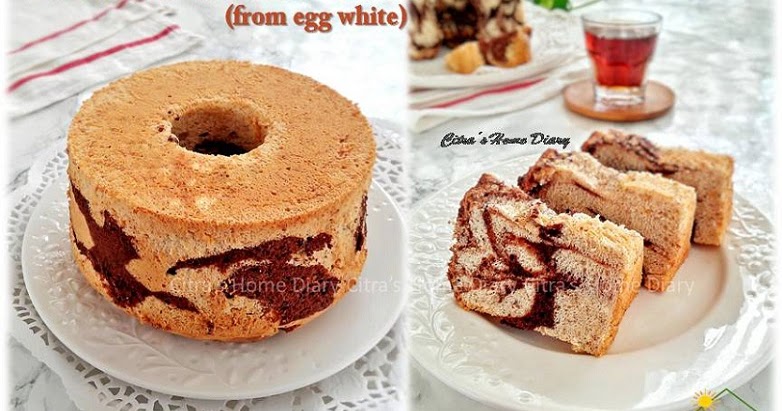
5. The Ingenious Technique: Folding Egg Whites and Late Baking Powder
The preparation method for President Kennedy’s favorite waffles holds a few intriguing twists that contribute directly to their renowned lightness and texture. One such distinctive instruction is to cream butter and sugar, add egg yolks, beat, and then add flour and milk alternately. This initial blending can be done at any time, offering flexibility, but the magic truly happens in the final steps, ensuring the mixture becomes thick and fluffy.
Perhaps the most interesting deviation from standard waffle preparation is the timing of the leavening agents. It is interesting that the baking powder does not get added until the very end, along with the egg whites. Normally, baking powder would be added to the flour much earlier in the process. However, the recipe explicitly directs us to “fold in egg whites, and add baking powder” when ready to bake. This unique sequence ensures maximum leavening power just before cooking.
The meticulous handling of the egg whites is also paramount. The recipe calls for two stiff beaten egg whites, which are then folded into the batter. This step is critical for achieving the waffles’ signature light and tender texture. Whipped egg whites incorporate air, creating an airy structure that makes the waffles feel decadent yet surprisingly light. The instruction to “fold just until mostly mixed in. Do not overmix” is a golden rule for maintaining that delicate fluffiness, preventing the batter from deflating and ensuring perfectly tender waffles.

6. Beyond the Batter: Perfect Pairings and Playful Variations
Once cooked in a waffle iron, these delicate creations are meant to be enjoyed with classic accompaniments. The National Archives Catalog recipe explicitly states: “Cook in a waffle iron and serve with hot maple syrup and melted butter.” This timeless pairing of rich, warm syrup and a touch of melted butter is the quintessential way to savor the simple, elegant flavor of these buttermilk waffles, allowing their subtle tang and tender texture to shine.
However, the beauty of these waffles lies in their versatility. The waffle batter contains very little sugar and no vanilla, making them a well-made (and buttery) blank canvas for various toppings. While hot maple syrup and melted butter are traditional, readers are encouraged to experiment with fruit, preserves, or even a homemade coconut syrup, which was mentioned as an easy family favorite that could make one want to eat no less than 10 waffles.
For those who love to infuse a bit of fun into their food, especially around holidays, the context offers a delightful suggestion. JFK was our U.S. president who most embraced his Irish heritage, and if you’re looking for a fun St. Patrick’s Day breakfast, simply add a couple drops of green food coloring and voila, green waffles! This playful variation, making breakfast vibrant and festive, demonstrates how a classic recipe can be adapted to personal taste and celebratory occasions, further solidifying its place in cherished family traditions.
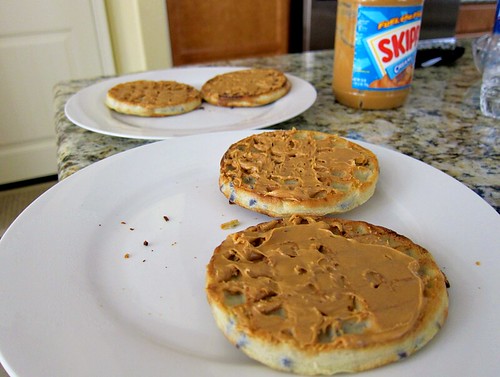
7. Unveiling JFK’s True Palate: A Look at His Dietary Realities
While we cherish the image of JFK enjoying these delightful waffles, a deeper look into his health reveals a complex dietary reality that significantly shaped his eating habits. If you took a quick glance at John F. Kennedy in his prime, you’d see a man on top of the world. Yet all was not perfect, and that spilled out onto (or rather stayed off) his plate. Behind his wide smile facade, Kennedy had some secret struggles, including Addison’s disease.
This illness is driven by insufficient adrenal systems and requires a carefully managed diet. In addition to this, the former president struggled with recurring irritable bowel syndrome (IBS) or colitis — which are notoriously aggravated by greasy, sugary, and high-fiber food types. During flare-ups, Kennedy’s stomach pains would have been excruciating, making it no wonder he stuck to such a strict diet, meticulously avoiding foods that could trigger discomfort.
With such culinary restrictions, Kennedy had an established menu of regular dishes he’d eat on a day-to-day basis. Eggs, bacon, and coffee got the green light for breakfast, while lunch was almost definitely soup (like the beef soup JFK credited with helping him win the primary). At dinner, the president could manage meat and mashed potato — usually choosing chicken, lamb, steak, turkey, or fish. These dishes, however, were usually served without culinary frills. His steak orders were admittedly a little underwhelming, often bland, with just peas, carrots, and mash on the side, a stark reflection of his necessary dietary caution. Yet, despite these restrictions, he did have a few genuine indulgences, including broiled bacon and, on special occasions, a surprising sweet tooth for crème brûlée and chocolate, often shared with those close to him.
Beyond the nostalgic appeal of presidential breakfasts, there’s a whole other fascinating world brewing in American food culture – one that’s grappling with what we put on our plates, literally. While JFK navigated his personal dietary challenges, modern-day America is confronting a much broader issue: the pervasive use of artificial food dyes. It’s a battle that’s reshaping not just our snacks, but the very essence of how we perceive and consume food.

8. The “War on Dyes” Begins: A Decade of Activism
For at least a decade, a powerful groundswell of activism has been building, driven largely by what are affectionately termed “momfluencers” and other concerned citizens. These passionate advocates have been tirelessly sounding the alarm on artificial food dyes, rallying people to sign petitions and take their concerns directly to major food giants like Kellogg’s and Mars. It’s been a grassroots effort, shining a light on ingredients that many consumers might not have given a second thought to before.
The arguments against these dyes are compelling and multifaceted. Firstly, there’s the startling fact that many artificial food dyes are made in a laboratory with chemicals derived from petroleum—the same type of ingredients found in gasoline, asphalt, and tar. It’s a revelation that, for many, is deeply unsettling, questioning the very nature of what we’re consuming when we reach for a brightly colored treat.
A significant concern revolves around the targeting of children. These dyes are predominantly used in foods that are aggressively geared and marketed towards the younger demographic. Marketing executives openly acknowledge that neon colors make kids want to buy these products, transforming simple snacks into vibrant, irresistible temptations. This focus on children raises ethical questions about ingredient safety and long-term health.
Perhaps the most potent argument, and one echoed by public figures like Robert F. Kennedy Jr., centers on the potential health implications for children consuming large amounts of these dyes. While there isn’t a huge body of evidence showing a causal relationship between food dyes and ADHD, one seminal study from 2007 in the UK, known as the Southampton Study, stirred considerable debate. It observed increased hyperactive behavior in children given drinks with artificial colors compared to those without, prompting the European Union to take a much harder look at these ingredients.
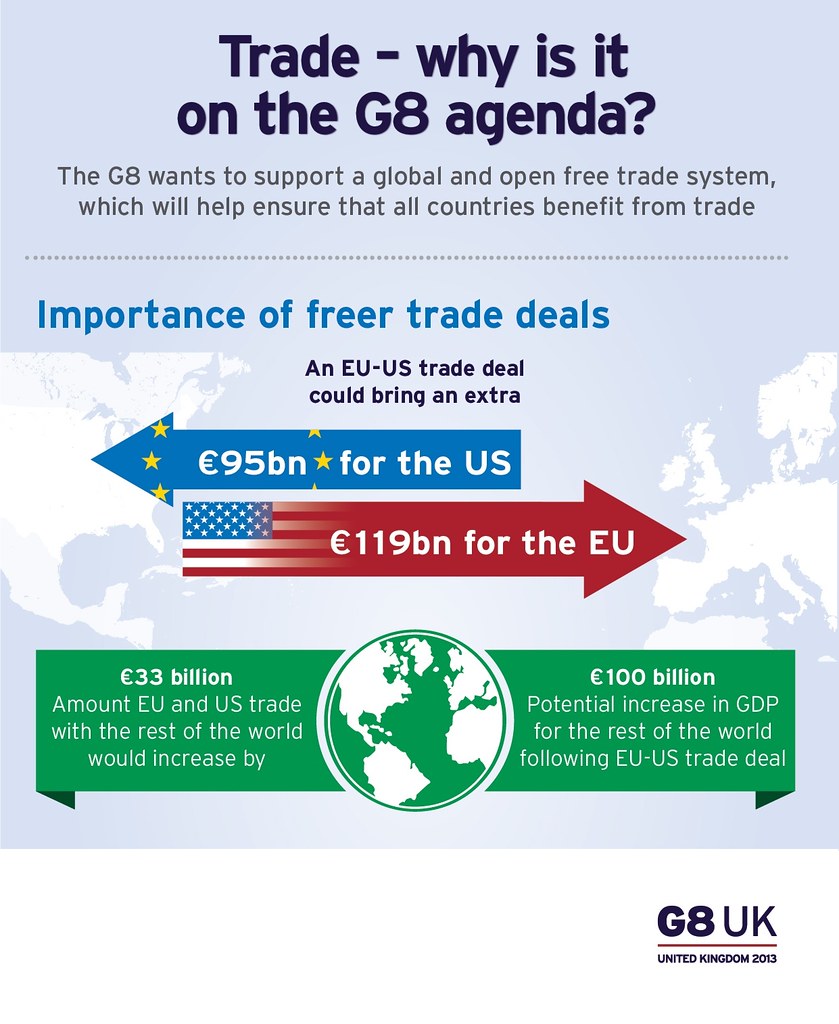
9. A Tale of Two Continents: EU vs. US Regulation
The difference in regulatory approaches between Europe and the United States when it comes to food additives like artificial dyes is stark and illuminating. In 2010, following studies like Southampton, the European Union implemented warning labels on foods containing certain artificial dyes—dubbed the “Southampton six.” If you pick up a candy packet in the EU that includes one of these dyes, you’ll find a clear warning: “this product could cause behavioral issues with children.” This reflects the EU’s “precautionary principle,” where new ingredients must be proven safe for consumers before widespread use.
Beyond warning labels, the EU has taken even more aggressive steps, banning or severely restricting certain artificial colors, such as red 3, due to links to possible carcinogens and cancer in male rats. The evidence against red dye 3 was so compelling that it was banned in Europe back in the early 1990s. This proactive stance highlights a regulatory philosophy that prioritizes consumer health with a higher burden of proof on manufacturers.
In stark contrast, the United States has traditionally operated under a “what’s-good-for-industry” approach, a system where regulatory frameworks tend to be a little looser, and self-regulation plays a larger role. Despite the compelling evidence, it took the FDA until this year to pass a ban on red 3, which, astonishingly, won’t even go into effect until 2027. Big food companies in the US have historically wielded significant lobbying power, influencing policy and research, which often results in a slower adoption of stricter food safety measures compared to their European counterparts.

10. The Industry’s Past Stumbles: When Natural Failed
It’s not as if American food companies haven’t attempted to pivot away from artificial colors before. In 2015, riding a wave of consumer demand inspired by European trends, there was a significant movement for big food to change its ways. Companies like General Mills, the makers of beloved cereals like Trix, enthusiastically announced plans to phase out artificial colors from their products, hoping to meet this new consumer preference.
However, the results were, to put it mildly, a bust. Consumers simply didn’t want the natural alternatives. General Mills, for instance, struggled to find suitable natural replacements for the vibrant blue and green pieces in Trix cereal, leading them to remove those colors entirely and offer less vibrant versions of others. The backlash was swift and unexpected, with consumers writing in to say the new, muted colors made them feel “depressed.” People, particularly adults who grew up with the iconic bright hues, actively asked for the old formula to come back.
The candy giant Mars conducted its own extensive consumer analysis around the same time. Their research showed a clear divide: European consumers were much more willing, even eager, to have artificial colors removed from their candies. Americans, on the other hand, emphatically declared, “do not touch my M&Ms!” The message was clear: “Don’t mute my reds. Don’t take away my blue M&Ms.” After this sobering research, Mars concluded they wouldn’t alter the vibrant, artificial colors of M&Ms and other popular treats for the US market, confirming that for American palates, bright color sells.
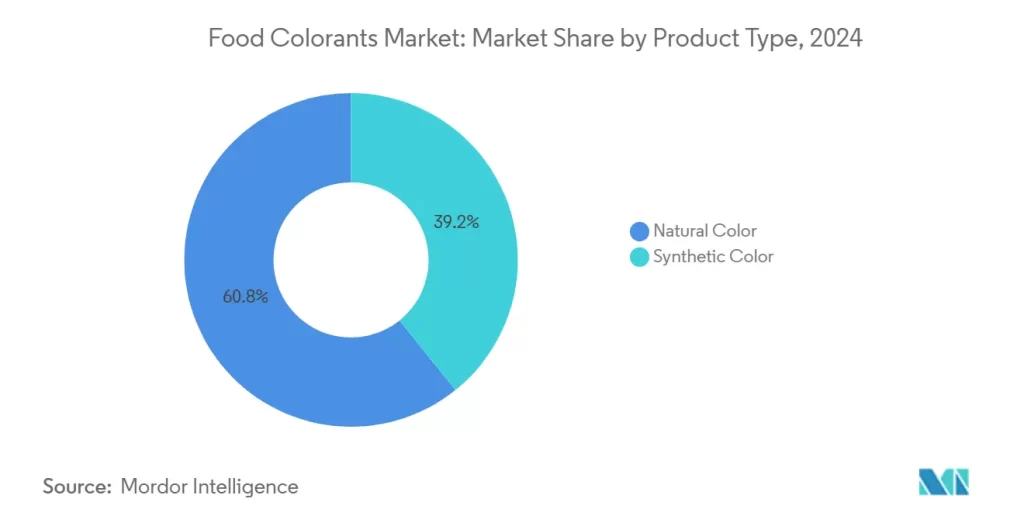
11. The Food Science Behind the Colors: Why Brightness Sells
The deep-seated preference for brightly colored foods in America isn’t just about nostalgia; it’s rooted in complex food science and human psychology. There’s a widely acknowledged saying that “we eat with our eyes,” and this holds particularly true when it comes to processed foods. When our eyes perceive a vivid, bright-colored chip or candy, our mind instantly communicates to our palate, setting an expectation. It tells us, “this is going to taste strong, spicy, or salty,” long before the food even reaches our mouths.
American food companies have decades of background and research confirming that bright colors undeniably drive sales. Creating these vibrant hues with artificial colors is incredibly inexpensive and remarkably stable, allowing products to maintain their eye-catching appearance on shelves for extended periods. This combination of visual appeal and cost-effectiveness has been a cornerstone of marketing strategies, making any deviation a significant financial risk.
However, moving away from these cheap and stable artificial dyes presents a host of formidable challenges. The cost of natural colors is substantially higher, potentially driving up production expenses for companies already facing tight margins. But beyond cost, there’s the monumental task of matching those iconic, often unnatural, colors. Blue, for example, is notoriously difficult to replicate naturally. While blueberries are blue on the outside, when squished, their juice is red, not blue! Even seemingly straightforward greens from kale or spinach are tricky, as natural colors are highly sensitive to heat and light and degrade rapidly.
This sensitivity impacts everything from packaging to manufacturing. A clear bottle of blue Gatorade, for instance, might not be possible with natural colors, as light exposure could cause the color to separate or fade, leaving a clear top and a colored sediment at the bottom. Furthermore, achieving anywhere near the vibrancy of artificial colors might require using ten times the amount of natural ingredients like carrot or beet juice, potentially necessitating a complete reformulation of products like Lucky Charms or Froot Loops. These complexities make the shift far more intricate and expensive than simply swapping one ingredient for another.

12. RFK Jr.’s Unconventional Gambit: The Peer Pressure Play
Stepping into the fray, Health Secretary Robert F. Kennedy Jr. recognized that the traditional playbook of regulation—the lengthy process of creating rules, gathering public input, and battling industry lobbyists—would likely lead to years of legal wrangling and ultimately, no meaningful change. To truly shake up the powerful food industry, he decided to employ a refreshingly novel approach: peer pressure, coupled with a touch of strategic bluffing.
In April, Kennedy orchestrated a high-profile press conference, announcing an impending ban on certain popular dyes widely used in the American food system. On stage, surrounded by health care leaders, he eloquently laid out a plan to systematically remove artificial dyes from our food. He even commended food companies for “working with us to achieve this agreement or this settlement,” painting a picture of industry cooperation.
However, there was a glaring omission that reporters quickly noticed: no food company executives were present. It was, as one might put it, “really weird” for such a monumental announcement. When pressed by reporters on the nature of these “agreements,” Kennedy confidently asserted that the industry had “voluntarily agreed” and shown “a lot of leadership on this.” The reality, as revealed by sources close to the administration, was far more audacious: Kennedy had essentially bluffed. He had a “soft agreement from one company” and was banking on that singular, unnamed commitment to trigger a powerful domino effect across the industry.

13. The Domino Effect: Big Food Falls in Line
Kennedy’s gamble, audacious as it was, began to pay off spectacularly. Shortly after his initial announcement, PepsiCo, the giant behind iconic snacks like Doritos and Cheetos, stepped forward, declaring that a number of their Lay’s chips would be free of artificial colors by the end of the year. This was just the beginning of the cascade.
By June, Kraft Heinz, a behemoth in the food industry, followed suit, committing to eliminating artificial dyes from its foods and beverages by the close of 2027. The momentum was undeniable, and the dominoes continued to fall. More recently, other industry giants like Nestle, General Mills, Smuckers, and WK Kellogg (makers of beloved cereals like Froot Loops) all announced their own plans to remove artificial colors from their products by the same 2027 deadline. It was an avalanche of corporate commitments, transforming the landscape of American packaged goods.
The reasons behind this sudden industry capitulation are multifaceted. While Kennedy’s “soft power” strategy played a role, a deeper current of fear and pragmatism guided these companies. This administration, more so than past ones, has demonstrated a willingness to make life “really, really hard” for companies it disapproves of. Faced with the choice of fighting a battle over artificial dyes—a costly and potentially unpopular stance—many opted for a strategic retreat.
For these companies, conceding on artificial dyes is a way to “pacify this administration” and “give them a win,” hoping to “fly below the radar” for other, even bigger issues. The real fear, the unspoken truth, is that the administration might next target sugar, fat, or salt—ingredients that are far more integral to product formulation and sales than dyes. Removing these would truly send the industry into a “downward spiral,” making the dye issue a comparatively minor concession to maintain peace and protect their core business.

14. Beyond Federal Influence: The Rise of State Laws
While RFK Jr.’s persuasive tactics have yielded significant results, his strategy relies on voluntary commitments, meaning there are no new federal regulations with “real teeth.” This lack of official mandates raises a critical question: what happens if companies renege on their promises or if future administrations shift focus? Skeptics rightly worry that, by the end of 2027, many major food and beverages could still contain artificial colors. This vulnerability highlights a potential pitfall of relying on soft power over statutory change.
However, for the food industry, another, perhaps more formidable, challenge is emerging from an unexpected quarter: state laws. A growing number of states, including California, Texas, and West Virginia, are actively creating their own, much more stringent regulations around artificial colors. Some states are enacting outright bans, while others, like Texas, are pushing for mandatory warning labels. These diverse and powerful state-level initiatives threaten to create what the industry dreads most: a “patchwork quilt of rules.”
This fragmented regulatory landscape poses significant operational headaches for national food companies. Imagine M&M Mars having to produce different versions of its candy, one with a warning label for Texas but not for neighboring New Mexico. The logistical complexities and increased costs associated with managing such varied requirements across states are immense. These state laws, being actual, legally binding rules, could ultimately exert a more profound and lasting impact on industry practices than any voluntary federal movement.
What’s truly striking is the involvement of states like Texas and West Virginia—traditionally considered “red states” not typically at the forefront of food regulation. This unexpected alignment underscores the broad, bipartisan appeal of the movement against artificial dyes, demonstrating the significant political power of grassroots concern, even influencing states that might otherwise be less inclined to impose such regulations. It signals a shift where consumer health concerns are transcending traditional political divides, forcing an evolution in how food is regulated and perceived across the nation.
Read more about: Melania Trump’s Discreet Influence: Unpacking the First Lady’s Evolving Role Amidst Renewed Scrutiny
Ultimately, the debate around artificial food dyes isn’t just about color; it’s about a broader re-evaluation of our relationship with ultra-processed foods. While nutritionists might debate the direct health links between dyes and chronic diseases like obesity or diabetes, the movement to remove them could have a more subtle, yet profound, impact. By making our snacks and cereals less “pretty” and less neon, are we, in a roundabout way, retraining America’s mindset? If children are less drawn to vibrant, sugar-laden cereals and consume smaller portions, it could indirectly tackle bigger issues like excessive sugar, salt, and fat intake. It’s about reconnecting our eyes and palates in a healthier way, perhaps inspiring a collective “I don’t want this” reaction to ultra-processed foods. This shift, slowly but surely, could be a significant win for public health, ushering in an era where our food is not just delicious, but genuinely nourishing.

